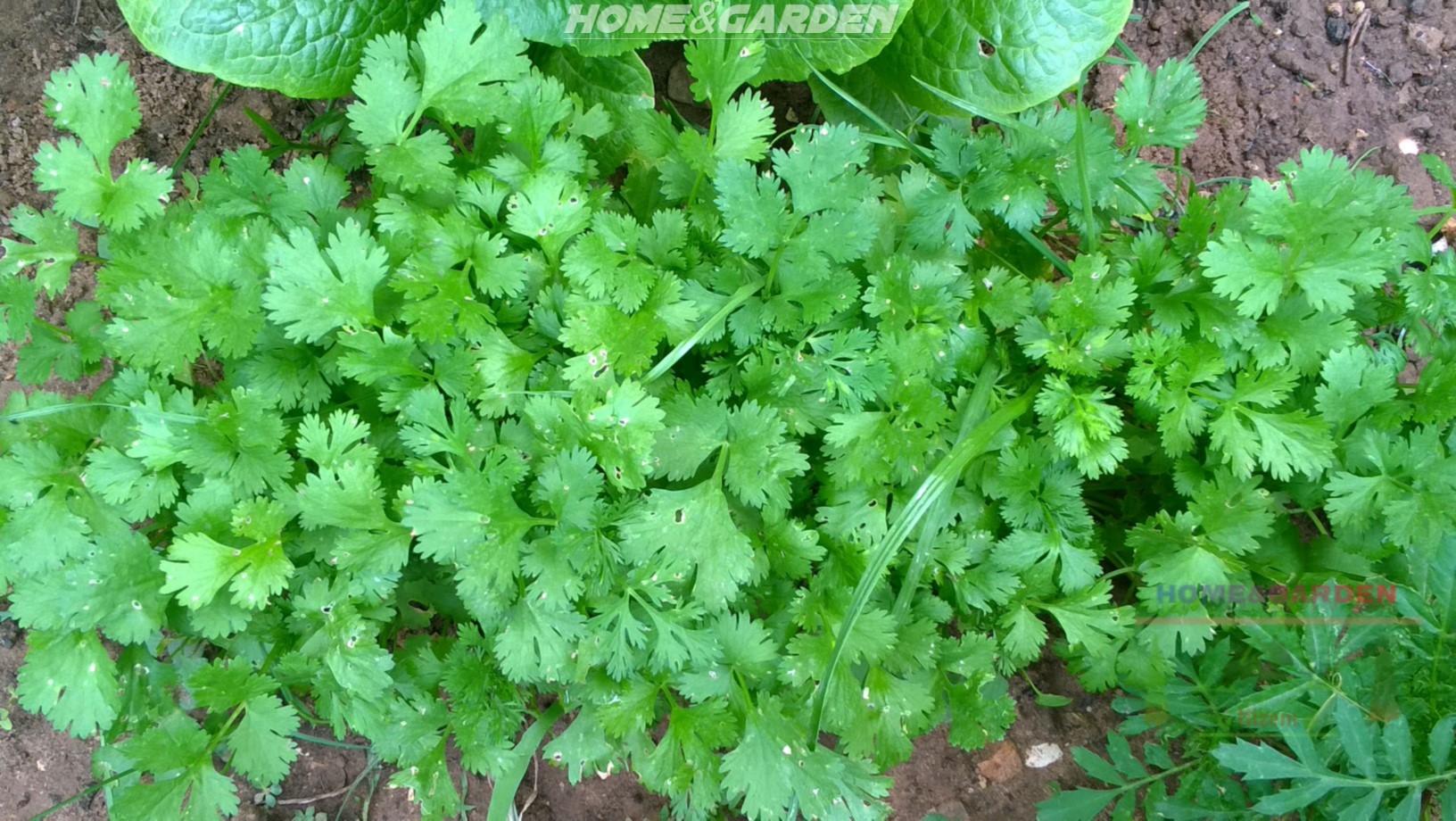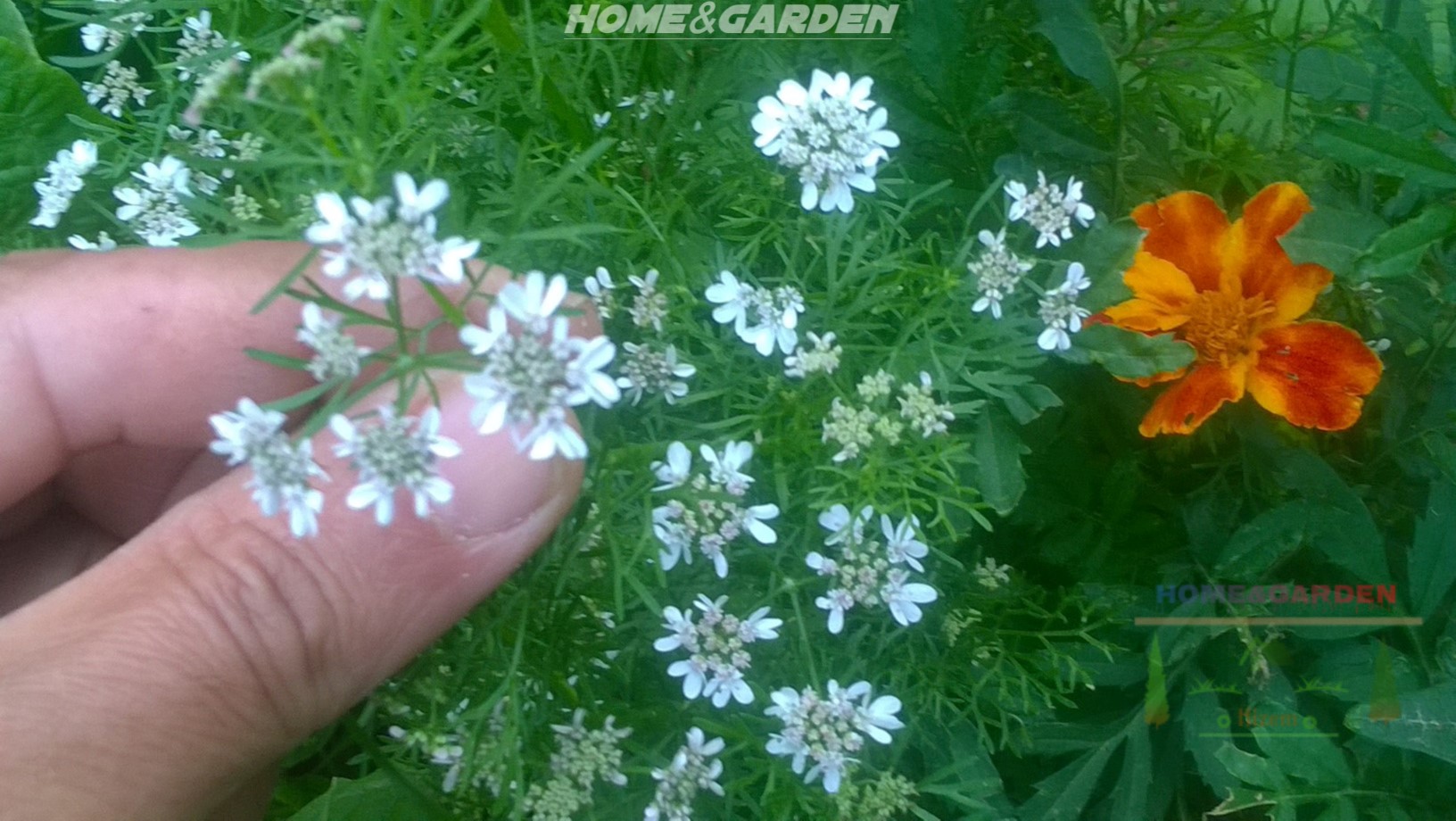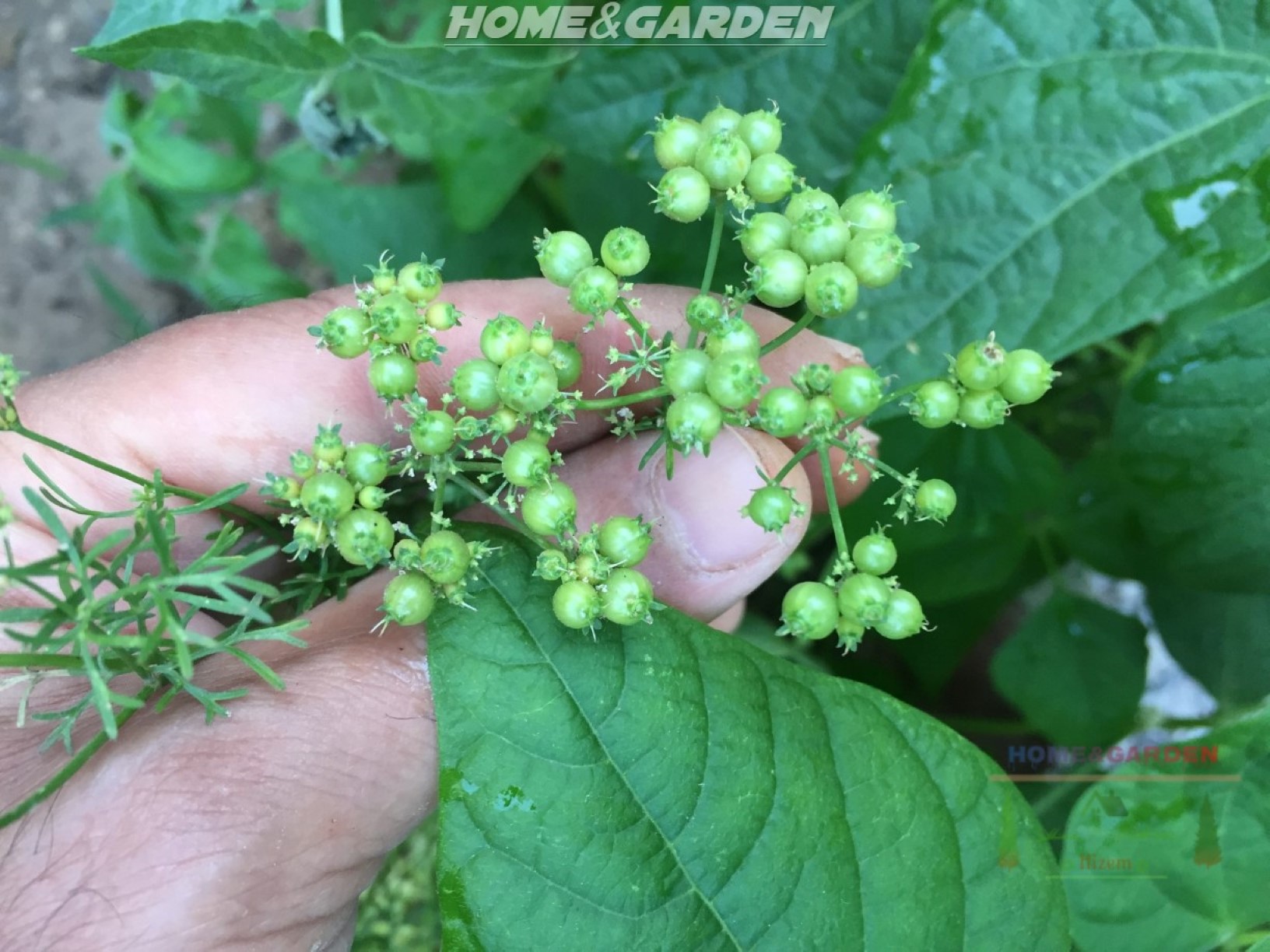Cilantro (Coriandrum sativum) is an aromatic herb with savory, deep green leaves that are harvested fresh and used to flavor a variety dishes. It is also known as coriander. Cilantro is easy to grow, and the seeds can be planted directly in the soil as soon as all danger of frost has passed or they can be grown in a pot. The best time to plant cilantro depends on where you live and your climate. Cilantro is a cool-season aromatic plant that does best at temperatures between "50 and 85 degrees F". It can tolerate temperatures as low as 10 degrees F, but if temperatures exceed "85 degrees F" the plant will start to bolt. Cilantro won't survive in frosty conditions, and doesn't like extreme heat either.
The seeds take about two to three weeks to germinate. As soon as the seeds start germinating, ensure they get good amount of sunlight. If they come up too thickly, just pull up and eat the extras.
Cilantro will start growing vigorously. You need to water them thoroughly.
If you want to thin them or remove some of the plants, always cut the stems with a scissor , don’t pull them out as you will disturb the other plants. After around 4 weeks from the date of planting, they will have lots of leaves and can be harvested.
. Snip off the top part of the main stem as soon as it appears to be developing flower buds. By cutting off the flower heads redirects the cilantro plants energy back into leaf, not flowering and seed production.
The biggest problem when growing cilantro is that the plants are so sensitive to heat, and also to stresses. Anything that stresses the plants will cause them to bolt and they will grow a flower prematurely and set seeds.
Growing cilantro adds a lot of healthy, fresh flavour to your kitchen. As freshly chopped cilantro is an excellent source of potassium, which explains why growing your own is far better than buying it from the spice rack, and because the only place you can find green coriander seed is in a garden. So give it a try today and grow it in your garden!
Please let us know your thoughts, experiences, or questions in the comments below. If you like this, you can share with your friends!
Some of the links to products on this site are affiliate links. I do make a small commission (at no extra cost to you) from these sales.
Cilantro VS Coriander
Cilantro and coriander are in fact different parts of the same plant. Cilantro refers to the leaves of the plant, which are used as an herb, while coriander refers to the seeds, which are typically used as a spice.
Cilantro Plant Description
Cilantro is a pretty annual aromatic herb with feathery leaves and large white umbrella flower heads.
Coriander is well known to attract bees, butterflies and has fragrant blossoms and aromatic foliage.
Growing Cilantro from Seed
Always buy good seeds from sources that are trustworthy when growing coriander.
Always buy good seeds from sources that are trustworthy when growing coriander.
In temperate climates, the best time to start planting cilantro is in late spring, between the months of March and May. You can also plant cilantro late in the summer and allowing it to grow into the fall. Remember that if the weather becomes too hot, the plants will start to bolt, they will flower and go to seed, so choose your best time of year wisely. Cilantro is best grown by directly sowing seed in the garden for two reasons. The plant grows so quickly , and since cilantro develops a taproot, it doesn't like being transplanted. You should be growing cilantro where it will get early morning or late afternoon sun, but be shaded during the hottest part of the day.
By following my tips you will succeed in growing this aromatic herb full of benefits!
Preparing the Soil
Prepare your garden soil by adding some good compost or other organic matter, such a well rotted chicken manure to the planting area and working it into the soil to a depth of at least 18 inches. Then rake the area smoothly.
Sowing the Seeds
Sow the seeds 2 inches apart in rows 12 to 15 inches apart if you are planning to harvest cilantro leaves. If you plan to keep the plant going for seeds and harvesting the seeds, plant the seeds 8 inches apart in rows 15 inches apart. For both uses, the seed depth should be about ¼ to ½ inches. Cover with soil and water gently. You should plant successive batches of seed to ensure fresh cilantro throughout the growing season.The seeds take about two to three weeks to germinate. As soon as the seeds start germinating, ensure they get good amount of sunlight. If they come up too thickly, just pull up and eat the extras.
Cilantro will start growing vigorously. You need to water them thoroughly.
If you want to thin them or remove some of the plants, always cut the stems with a scissor , don’t pull them out as you will disturb the other plants. After around 4 weeks from the date of planting, they will have lots of leaves and can be harvested.
Harvesting The leaves
When you harvest the cilantro leaves, make sure that you are using sharp, clean scissors. It’s best to harvest a few larger leaves from several plants, so they all keep producing. Always leave a few leaves on the intact stem so that the plant will still be able to grow. You should be harvesting cilantro about once a week. If the plant is growing well, you can harvest more often. If you are harvesting cilantro leaves in large amounts, you can preserve them by freezing in cubes. You can harvest cilantro roots as well as the leaves, pull up whole plants and cut the main stem just above the roots. Strip the leaves, then remove as much dirt as you can off the roots and rinse with water very well. You can make a delicious Thai chicken soup with the roots.
Harvesting the Seeds
Cilantro seeds can be harvested green or you can wait until they have dried. The taste is a bit fresher in the green stage. Coriander seeds are harvested at the end of the plant's life cycle. The idea is to harvest the seed pods before they are dropped from the plant. Cut the seed clusters off the plant when the seeds are turning brown, and drop them into a paper bag. Some of the the seed pods will release their seeds into the bottom of the bag within a couple of a days. The remaining pods can be rolled around in the palm of your hand. They will break open, releasing the seeds.
Coriander seeds should be stored whole in an container in a cool, dark area of the kitchen. Coriander seeds can be used whole or you can grind them up, depending on what the recipe you are using.
. As the plants start growing, pay attention to them and look for pests, diseases and deficiencies. Never let coriander plants dry out, as they are very sensitive and any stress during the growing period will cause them to bolt.
. Make sure your cilantro plants never dry out.
. Make sure your cilantro plants never dry out.
. Cilantro plants do not like humidity. Always grow cilantro where the air can circulate freely.
. Pinch back young cilantro plants an inch or so to encourage fuller, bushier plants.. Snip off the top part of the main stem as soon as it appears to be developing flower buds. By cutting off the flower heads redirects the cilantro plants energy back into leaf, not flowering and seed production.
Cilantro Problems
Companion Planting
Cilantro can be planted nearby spinach, beans and peas. Cilantro repel aphids, spider mites, white flies, and potato beetle.Growing cilantro adds a lot of healthy, fresh flavour to your kitchen. As freshly chopped cilantro is an excellent source of potassium, which explains why growing your own is far better than buying it from the spice rack, and because the only place you can find green coriander seed is in a garden. So give it a try today and grow it in your garden!
Please let us know your thoughts, experiences, or questions in the comments below. If you like this, you can share with your friends!
Cilantro seeds available from HERE!
Some of the links to products on this site are affiliate links. I do make a small commission (at no extra cost to you) from these sales.









